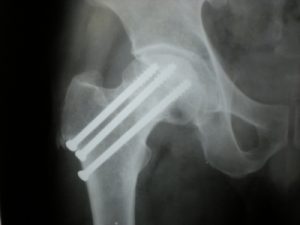A few minutes a day can help with osteoporosis!

Major risk factors for osteoporosis are: being Caucasian, petite and female. However, this recent study showed just 1-2 minutes a day of intense running can improve bone health. Consider getting a DEXA scan to evaluate your risk for osteoporosis.
DEXA scans are the most common method to measure bone density. It is fast, relatively inexpensive, and X-Ray based.
The Research
A small amount of precisely measured high-intensity habitual physical activity predicts bone health in pre- and post-menopausal women in UK Biobank
Victoria H Stiles Brad S Metcalf Karen M Knapp Alex V Rowlands
International Journal of Epidemiology, dyx080, https://doi.org/10.1093/ije/dyx080
Published:
29 June 2017
Background: Physical inactivity is a highly modifiable risk factor for the development of osteoporosis but, due to a lack of research that has precisely and objectively meaured physical activity (PA) relevant to bone, the specific contribution that PA can make to bone health is poorly understood. This study examined whether a more precise measure of PA relelvant to bone was associated with meaures of bone health in pre- and post-menopausal women in UK Biobank.
Methods: Time spent at intensities specific to bone health [≥750 milli-gravitational units (mg) and ≥1000 mg] were analysed from raw tri-axial acceleration data averaged over 1-second epochs from 7-day monitoring of habitual PA using accelerometry-based activity monitors (100 Hz; AX3, Axivity, UK) of 1218 pre- and 1316 post-menopausal healthy women. In a cross-sectional analysis, associations between categories of time (<1, 1–2 and ≥2 minutes) spent above the intensity thresholds and calcaneal quantitative ultrasound measures of bone health (bone mineral density T-score, BMDT-score; speed of sound, SOS; and broadband ultrasound attenuation, BUA) were examined.
Results: Compared with <1 minute, spending 1–2 or ≥2 minutes/day at intensities ≥1000 mg in pre-menopausal and ≥750 mg in post-menopausal women was positively associated with BMDT-score, SOS and BUA.
Conclusion: Brief bursts of high-intensity PA relevant to bone health can be captured by applying bone-specific thresholds of intensity to raw tri-axial accelerations averaged over 1-second epochs. Accumulating 1–2 minutes/day of high-intensity PA, equivalent to running in pre-menopausal women and slow jogging in post-menopausal women, is associated with better bone health.











